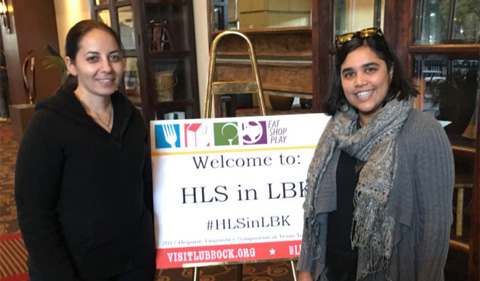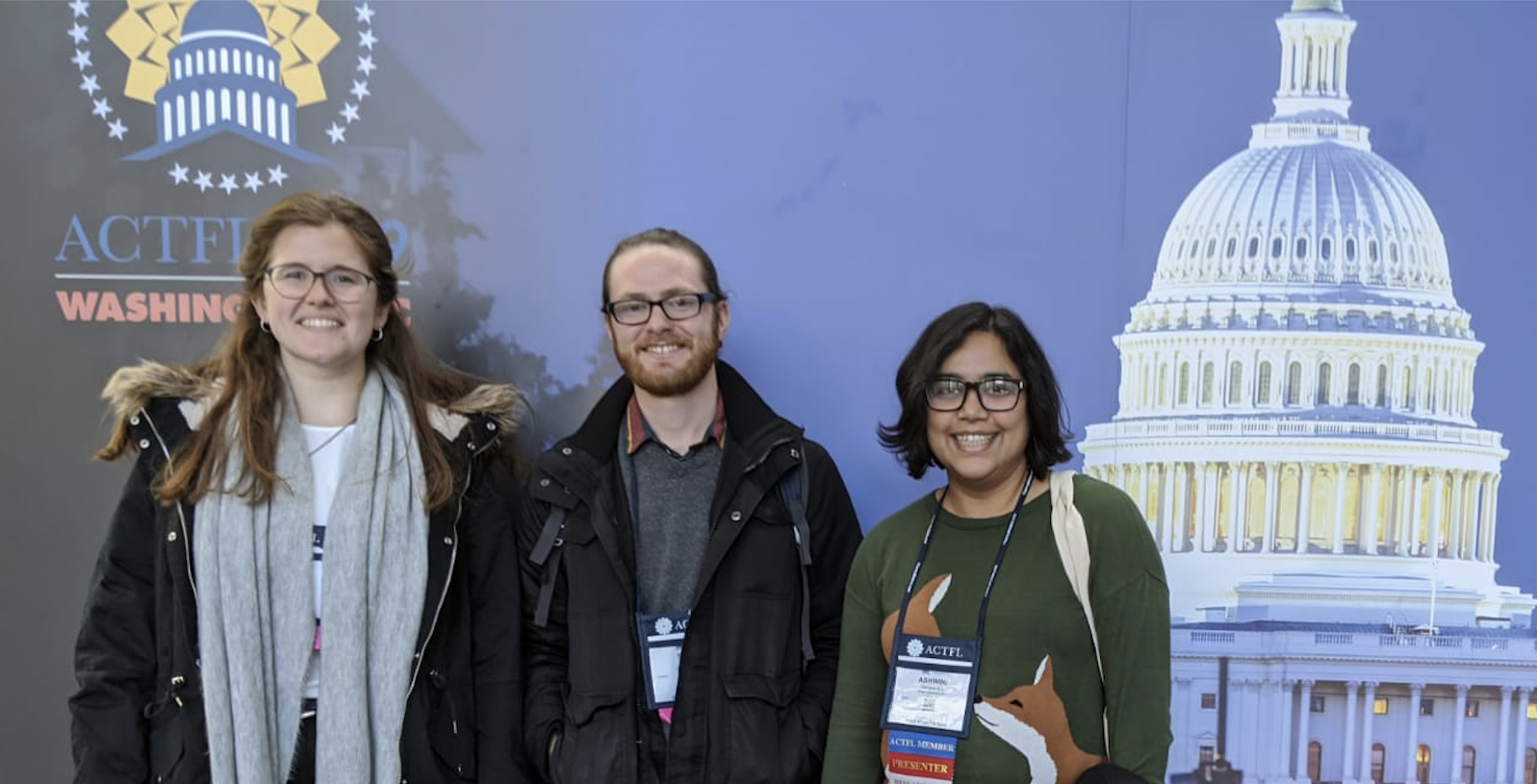
Dr. Ashwini Ganeshan and graduate student Genoveva Di Maggio at the 2017 Hispanic Linguistics Symposium.
Dr. Ashwini Ganeshan and Modern Languages graduate student Genoveva Di Maggio presented their research on politeness strategies used in Uruguayan, Mexican and Peninsular Spanish at the 2017 Hispanic Linguistics Symposium in Lubbock, TX, Oct. 26-28.
Ganeshan is Assistant Professor of Spanish, and Di Maggio is a second-year master’s student of Spanish.
The poster titled “Análisis comparativo de estrategias de cortesía en variedades de español y su relación con género” was well received. This study focused on speech-threatening acts in two complementary contexts, and gender effects also were analyzed. The results show that the Uruguayan Spanish tone of the order is more tentative, and the use of longer preambles is favored. Gender was not significant. The study contributes to current research on requests across varieties of Spanish as well as research on language and gender.
Di Maggio also presented research on acquisition of Spanish subjunctive at the symposium in Lubbock. This second language acquisition project was carried out under the guidance of Dr. Muriel Gallego, Associate Professor of Spanish.
The presentation titled “Towards morphosyntatic development: From mood recognition to mood production in written modality” investigated the effects of collaborative writing within an interactionist cognitive framework. Specifically, the study examined whether Spanish L2ers with low proficiency engaging in a dictogloss task show increased signs of mood production abilities. Repeated measures ANOVAs returned significant effects for group and time. Participants engaging in a dictogloss task produced the subjunctive mood in expected contexts, which was also maintained over time as compared to participants in the control group who did not increase subjunctive production. This paper contributes to current discussions concerning the acquisition of mood selection abilities and mood production in late L2ers and presents initial evidence of subjunctive production emergence in low-proficiency levels as enhanced by interactionist instructional models.



















Comments